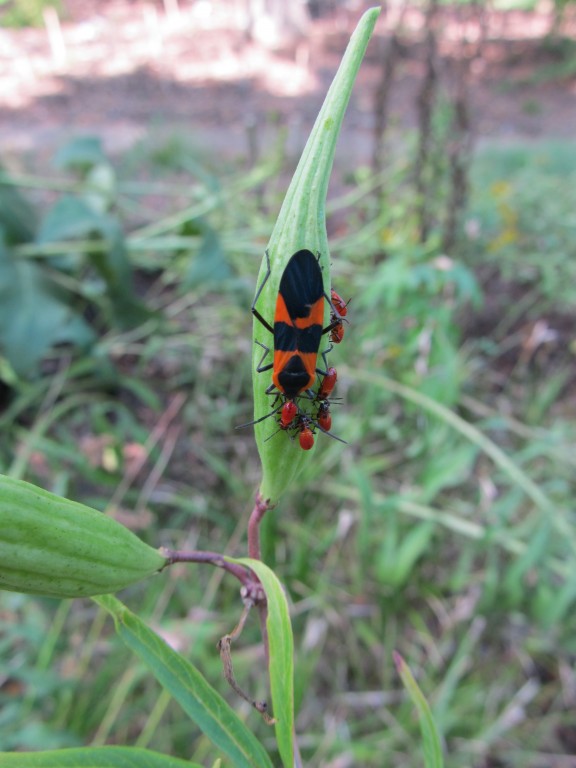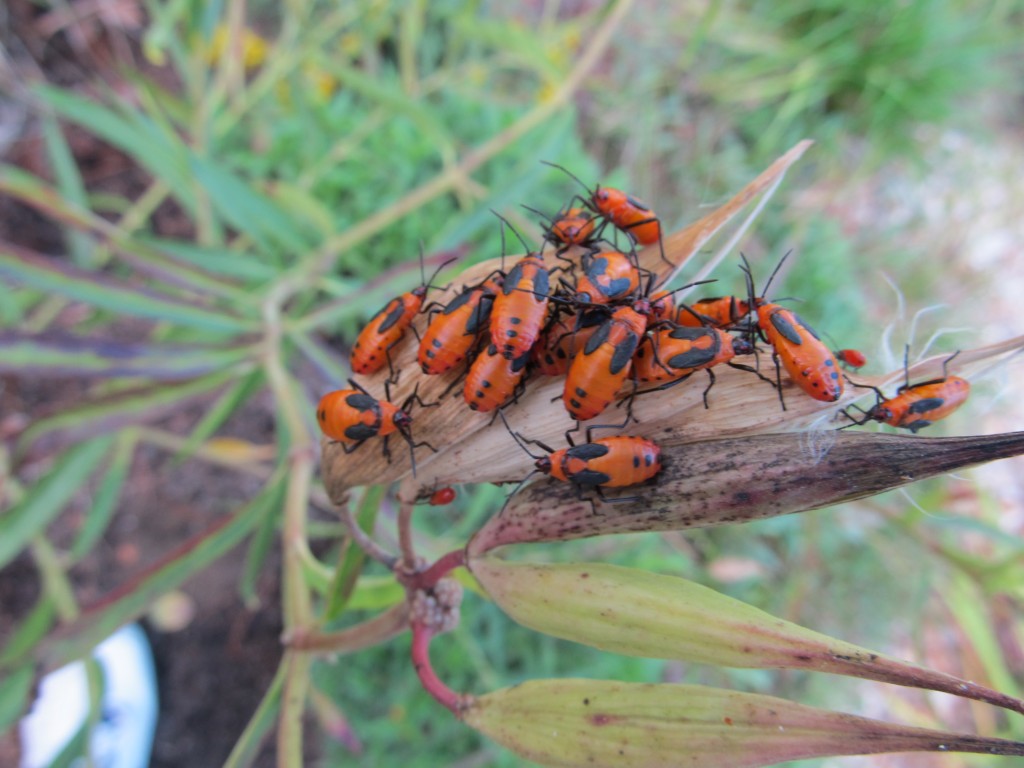 I didn’t know for sure, but then Kathy B. came by on her way to the grocery story and gave me a name. Is there more than one species represented here? Male and female of the same species? Different life stages of the same species?
I didn’t know for sure, but then Kathy B. came by on her way to the grocery story and gave me a name. Is there more than one species represented here? Male and female of the same species? Different life stages of the same species?
Note the plant. Can you identify it? If so, and you have one (or one of its close relatives) in your garden, save some seeds for planting next year.
By Ed Schmidt



I call them squash bugs but there is another name I’m sure. And that looks like a Marsh Milkweed to me!
They are native milkweed bugs (order hemiptera) that feed with their long piercing, sucking mouthparts on native milkweeds. A few of them will not cause much stress to the plant; too many of them will drain the plant(s) of fluids. The challenges are that these bugs feed on the milkweed juices and as a result, are distasteful to many native predators (just like monarchs) and they are prolific breeders. To keep their populations in balance, we squash many of them on our milkweeds. Adults can be identified by folded wings that extend to the tip of their abdomens and the young/immatures/instars have short wing “pads” (colored black in these photos). At this time of the year, the milkweed bugs are not going to have any great impact of the plants because the perennial milkweeds are wrapping things up for the growing season; however, if there is an abundance of adults this fall, they may mate and lay a bunch of eggs that may require more attention next growing season. Dave Tylka
I had them all over my purple milkweed all summer long. Looked it up on the web. I learned that it is not harmful.
Ed
Very nice pictures.
Kathy B
Thanks for all the comments. Thanks to Dave Tylka, I learned a new term, instar. Here is part of the Wikipedia entry:
An instar is a developmental stage of arthropods, such as insects, between each molt (ecdysis), until sexual maturity is reached. Arthropods must shed the exoskeleton in order to grow or assume a new form. Differences between instars can often be seen in altered body proportions, colors, patterns, or changes in the number of body segments. Some arthropods can continue to molt after sexual maturity, but these subsequent molts are generally not called instars.
For most insect species the term “instar” is used to denote the developmental stage of the larval or nymphal forms of holometabolous (complete metamorphism) or hemimetabolous (incomplete metamorphism) insects, but the term can be used to describe any developmental stage including pupa or imago (the adult, which does not molt in insects).
Boxelder bugs